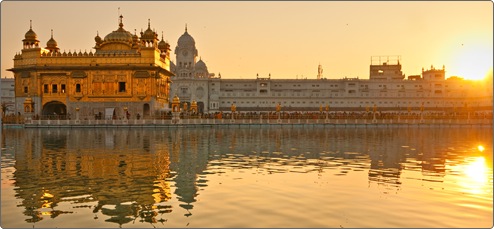
Sikh Funeral
Antam Sanskar Ceremony (Death Ceremony)
In Sikhism, death is a natural part of living and God's will. It
is part of the cycle toward complete unity with God. Sikhs believe
in reincarnation and karma. They prefer cremation, though other
methods of disposal, including burial in the ground or at sea, is
allowed if cremation is not possible. Because the body is
considered an empty vessel, Sikhs do not place gravestones at the
burial site.
The death ceremony can be divided into two parts: Sanskar, which
is the cremation, and Antim Ardas, the final prayer before the end
of the ceremony.
The body is washed then clothed by family members; a turban or
scarf covers the head. Once the body is at the cremation grounds,
mourners recite prayers and sing hymns. Once the cremation begins,
the Sohila, a bedtime prayer, is recited, followed by Ardas, a
formal prayer. Ashes can be given to the family or thrown into a
body or water.
In the days following the cremation, the Sri Guru Granth Sahib
is read, timed to conclude on the tenth day after the ceremony. The
reading, which can take place either at home or in a place of
worship, provides spiritual support and consolation to family and
friends, is called the Sahaj Path. The mourning period ends with
the conclusion of this ceremony.
Crying out, wailing, or other public displays of emotion are
discouraged. As a guest at the service, you will be expected to
take off your shoes and cover your head with a piece of cloth. Men
wear black headscarves, and women wear pale colored or white
headscarves.